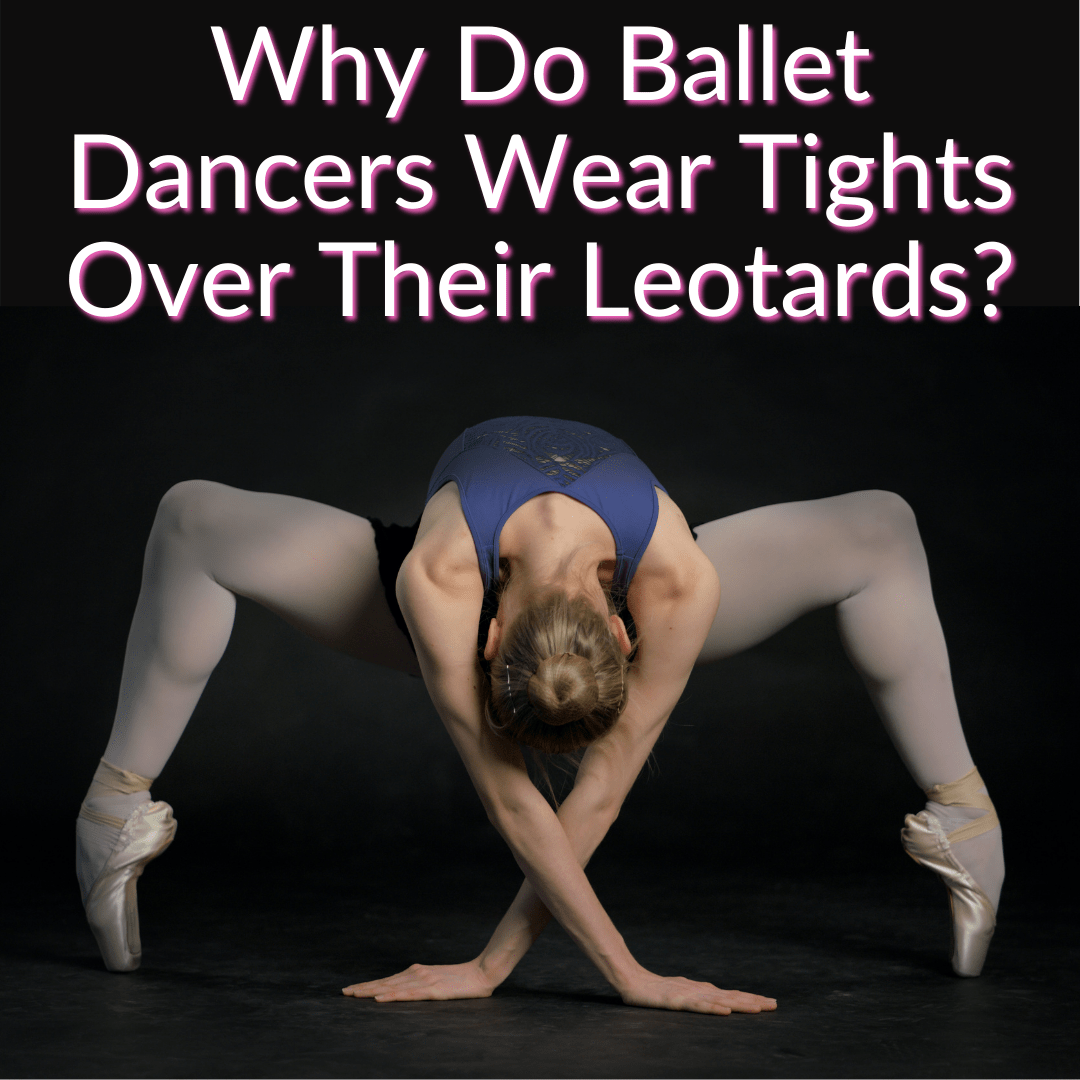 Tights over a leotard is not a great look.
Tights over a leotard is not a great look.
It only gets worse when you throw in the leg warmers.
So why do ballerinas dress this way?
Why do they choose to wear tights over a leotard, despite the awkward appearance?
We’ve already covered why ballerinas wear leg warmers in another article.
Today we will tackle the phenomenon of tights over a leotard.
Believe it or not, this attire actually has some incredible advantages. You didn’t think ballerinas simply had no sense of style, did you?
Table of Contents
Why Do Ballerinas Wear Tights?
Tights actually offer medical benefits, as well as performance-based benefits. Here are the main ways in which they benefit ballerinas.
Enhanced Blood Circulation
Compression exerts pressure on your blood vessels, causing them to narrow. When under that pressure, blood travels faster and at a higher velocity (provided that there are no circulatory problems in the dancer).
This helps to bring blood away from tired muscles faster, and pump fresh blood with more oxygen through the muscles to prevent fatigue from lactic acid production.
When practicing, ballerinas often wear leg warmers as well. These serve to warm the blood vessels, causing them to widen.
When compression works in tandem with the widening of blood vessels through heat (from the leg warmers), you get a high blood flow at a faster rate. This is important to avoid potential long-term injuries down the road.
Unhindered Movement
Tights allow you the same freedom of movement you would have if you were naked. This means there is no clothing restricting your dance (provided you have a high-quality pair of tights, of course).
Obviously, nobody is practicing ballet naked, so tights are the next best thing. They give dancers their full range of motion without having to worry about what they’re wearing at all.
Groin Support
One of the most uncomfortable feelings in the world can be when your leotard is riding up on you, causing chafing and irritation. It is also a huge mental distraction that pulls your attention away from your moves.
This is the last thing you need as a ballerina. Supporting the leotard and your sensitive areas is important. This is one of the primary reasons dancers wear tights in the first place.
Flexibility And Support
Your muscles need to stay in one specific area. They’re attached to your bones and they’re tough as can be, but extreme movement—such as we find in ballet—mixed with muscle fatigue can make it easier to tear them.
With the right amount of support (provided by the compression of the tights), your muscles are supported to stay in place while working the way they’re supposed to.
When you make sudden and abrupt movements, there’s less force pulling your muscles away from the bone. You can practice as hard as you like on your ballet barre, knowing that your outfit has your back.
Reduced Muscle Soreness
When you’re bringing all that oxygen to your muscles, you prevent an overproduction of lactic acid. Lactic acid secretes from your muscles as you work them out, but too much lactic acid sitting on top of that muscle will result in fatigue and an overwhelming desire to stop using those muscles.
It’s like your brain telling you “You’ve used these, now let them rest,” Except a ballerina can’t do that in the middle of a show.
Instead, their leggings help reduce soreness as it happens by optimizing the circulation of oxygen to the muscles. It should be noted that having tights that are too tight hinders movement and does not allow enough oxygen to travel. There’s definitely a balance here.
Why Do Tights Go Over Leotards?
Leotards act like underwear in a way. They’re intended to be close to the skin and sensitive areas, and are designed to be flexible and non-abrasive.
There’s no real design flaw there, but there are benefits to wearing tights as well.
If tights were worn underneath, the leotards would constantly pull on the tights, making them feel more like a thong than anything else. This would cause discomfort for the dancers.
After high leg movements, the tights would rise up and become constricting. Tights go over the leotards to still give those benefits we mentioned earlier, but with comfort and flexibility in mind.
While it doesn’t always look like the most cohesive outfit, it’s the best way for dancers to wear their ballet clothes without hindering their ability to move.
Previous Ballet Attire Through History
Ballet is an age-old and revered form of dance. But that doesn’t mean there haven’t been changes. Changes in the types of ballet dances and in the style.
In fact, some of the most notable changes were to style. As you might guess, the style of the dancers changed much more rapidly than the dances themselves. In fact, it was often the changes in style that made advances in dance steps possible.
We can trace the original ballet style back to 1637. Ballerinas wore heavy clothing that looked similar to standard court dress, complete with wigs and jewelry. They were not conducive to movement.
Men wore a stiff, wired skirt that had the shape of a modern tutu. Both sexes wore heeled shoes and sometimes masks. The masks had a fixed facial expression on them. The dancers’ actual expressions were never seen.
These costumes saw changes over the years. By the later part of the 18th century, they were completely different.
The large overskirts were replaced by more clinging tunics that resembled robes worn in ancient Greece.
In 1790, tights were invented. These allowed for more freedom of movement, which made entirely new dance steps possible.
Another big step forward in allowing new moves came in 1820, with the introduction of blocked-toe shoes. Now female dancers could dance on point.
In 1832, Marie Taglioni introduced the Romantic tutu. It was a skirt with several layers that reached all the way to midcalf, but over the next 50 years, it grew shorter and shorter until it revealed the whole leg.
From then on, the tutu became the standard ballet outfit. But many modern ballets of the 20th century replaced it with streetwear.
In the 1910s and 1920s, ballerinas would wear stockings and ballet shoes, but their dresses were extremely loose.
They would sometimes hang around their underarms, and the seam along the center of their dresses (which you would assume would be there for their waist) would sometimes hang around the bottom of their pelvic areas.
That’s still quite different from the ballet uniforms we have today.
Male ballet dancers in these times wore tighter stockings than females, and tight-fitting dance pants and collared shirts. It was quite a wild polarization.
In the 30s and 40s, you saw the dawn of tights and tight-fitting shirts. Dresses were out.
This was around the time that beachwear was exceedingly popular (only to be popularized again in the 1980s), so you would see floral pattern and beach-themed leotards on top of solid black or white tights for ballet dancers.
It wasn’t until the middle of the 50s and end of the 60s that we really saw high-waisted clothing and leotards in full use, the way that we know them now.
Since then, little has changed, but we’ve optimized what works to a great degree. The clothing no longer gets in the way of you doing the perfect dance turn in ballet.
Ballet Tights Over Leotards: Conclusion
Both tights and leotards have numerous benefits for dancers. We covered the benefits of wearing tights above. We also explained why the tights need to go over the leotard. It is essentially a matter of physics.
What you wear as a dancer is incredibly important. The wrong outfit could hinder your movement. If the outfit is especially bad, it could even lead to injury.
The right outfit, on the other hand, could actually help prevent injuries. This includes things like leg warmers, which are not worn on stage, but are common in practice. Learn why ballerinas use leg warmers.
Even if you don’t like the look of tights over a leotard (not to mention the added leg warmers), it’s not about style. It’s about wearing what allows for the best possible ballet performance, whether you are working out on a ballet barre at home, or performing in front of an audience.
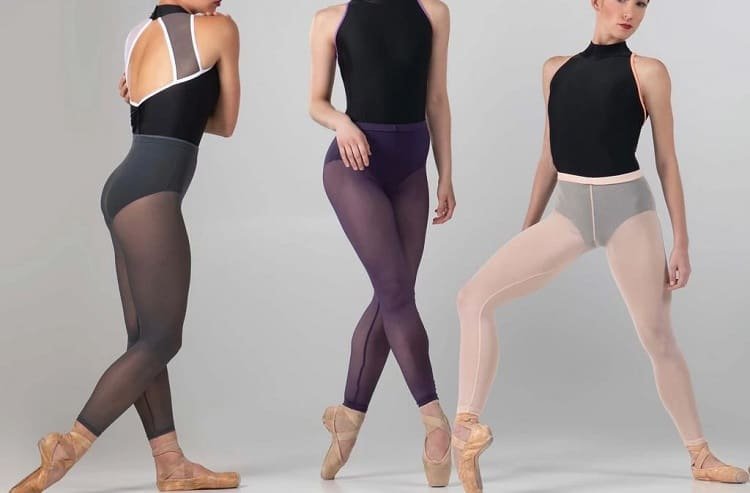
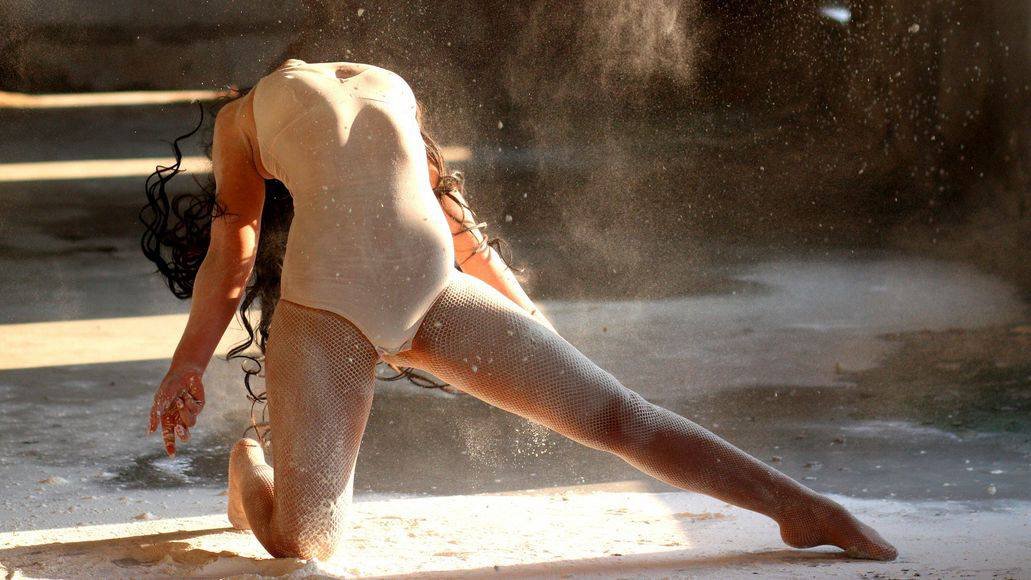
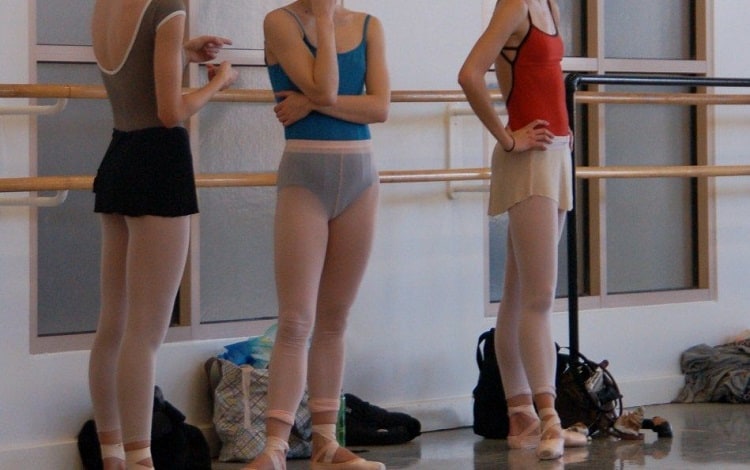
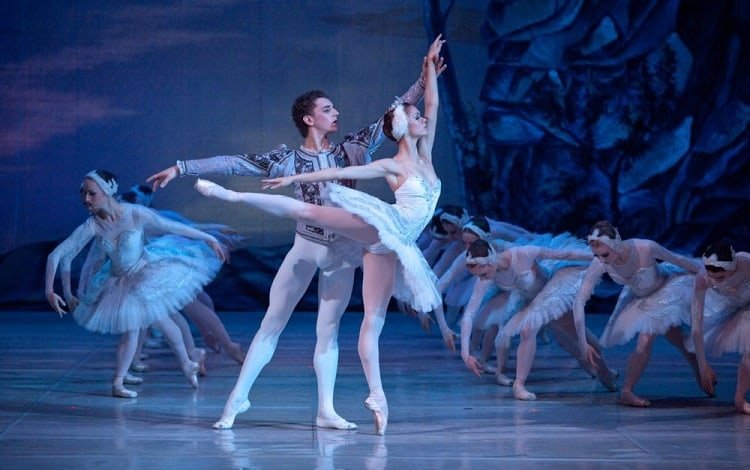
As a dancer, I agree with you totally that tights offer so many benefits to dancers. The problem is: I’m a guy and thus not allowed to wear comfortable tights, which are “female only”. I would either have to go bare leg or wear thick and uncomfortable tights. I understand performing outfits must have gender roles, but in practice, can’t men just wear something comfy and practical, like regular tights that women wear?
Thanks so much for breaking this down and explaining both at a medical level yet one the average individual can understand and readily make use of!! Around six and a half years ago I developed a blood clot in a peripheral vein in my left leg. I was treated by a medical college vein specialist physician with a course of 6-8 months of a well known blood thinner which resolved the situation. Then he had me wear medical weight compression tights daily during waking hours to increase circulation and ward off any future complications. I finally found comfortable tights to wear that are relatively inexpensive and have been doing so since that time. They are wonderful even for a somewhat taller guy like me. Also because of an injury and core weakness I was exposed to Pilates by a wonderful local instructor and found how beneficial it can be. She then had me work on barre movements with a similar result. I was completely blown away at how basic these body weight movements were yet how unbelievably difficult they tend to be. It wasn’t long before I was hooked on barre classes and am doing them around five days a week. Let me tell you, anyone who has ever taken barre will tell you how difficult it is to do yet it leaves you feeling stretched out, refreshed and simply wonderful almost like a runners high yet slightly different always having you want more! Crazy yet simply wonderful stuff. Being a guy it takes a lot of confidence and effort to walk through the door the first time especially when you are already wearing compression tights. Yet once you have been there a few times, people see how serious you are and understand. Being the only guy in class is just fine with me for I have been able to meet some of the kindest – strongest and respectfully so most beautiful ladies in the world in these barre classes. Take a barre class and you will quickly realize that women probably are the stronger of the two sexes because of how easy they make all of this look. Don’t believe me – take a class and you will see immediately! THANKS